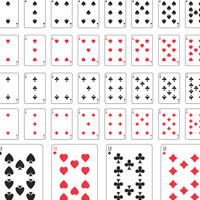 While I’m not a big country music fan, one of the few country songs I can sing along to is “The Gambler” by Kenny Rogers. While Kenny certainly knew how to make money, he also had a pretty good idea of how to keep it: “You gotta know when to hold ‘em, know when to fold ‘em, know when to walk away and know when to run.” There’s a valuable lesson for investors in those lyrics.
While I’m not a big country music fan, one of the few country songs I can sing along to is “The Gambler” by Kenny Rogers. While Kenny certainly knew how to make money, he also had a pretty good idea of how to keep it: “You gotta know when to hold ‘em, know when to fold ‘em, know when to walk away and know when to run.” There’s a valuable lesson for investors in those lyrics.
When investing most people (and professionals too), spend a lot of time deciding which investments to buy and little time understanding when to sell. Having a security selection process and understanding what you own and why you own it is important to the investment process, as you can read about here, but it may be even more important to successful investing to have a proper sell discipline.
Part of your process, even before buying a security, should be to outline reasons you would hold the investment even, perhaps, through periods of underperformance and also to establish factors that would cause you to sell it in the future. At The Center for Financial Planning, Inc. some of our potential sell reasons include:
- Key personnel departure
- Attainment of your price target
- Increased correlation to other investments; and so on.
Having these points in mind makes it easier and much less emotional when thinking about selling a position.
While it is usually best to buy and hold over longer periods of time, it is a good idea to play devil’s advocate with your portfolio. Have you heard of the endowment effect? Simply put the endowment effect states that once you own something you start to place a higher value on it than others would. A way to potentially mitigate the endowment effect is to ask yourself, “If I were to build a portfolio today would this security be part  of it?” If the answer is “no” then it may be time to sell the investment and purchase something with greater growth potential from this point forward.
of it?” If the answer is “no” then it may be time to sell the investment and purchase something with greater growth potential from this point forward.
Knowing when to hold ‘em and fold ‘em doesn’t come easily. But with some thought, you can successfully time when you buy and when you sell, because you never want to have to walk away … or worse yet … have to run!
James Montier. Little Book of Behavioral Investing. 2010
The information contained in this report does not purport to be a complete description of the developments referred to in this material. Any information is not a complete summary or statement of all available data necessary for making an investment decision and does not constitute a recommendation. Every investor’s situation is unique and you should consider your investment goals, risk tolerance and time horizon before making any investment. Investing involves risk and you may incur a profit or loss regardless or strategy selected. Consult a Financial Advisor before implementing any investment strategy. Links are being provided for information purposes only. Raymond James is not affiliated with and does not endorse, authorize or sponsor any of the listed websites or their respective sponsors. Raymond James is not responsible for the content of any website or the collection or use of information regarding any website’s users and/or members.
